Anthurium Warocqueanum, also known as the Queen Anthurium, is one of the best perennials for your plant-friendly home.
Native to the tropical rainforests of Colombia, this houseplant showcases velvety leaves that can grow to several feet in length. With its hard-to-miss size, it is definitely an ornamental plant to go for if you want to make a striking impression.
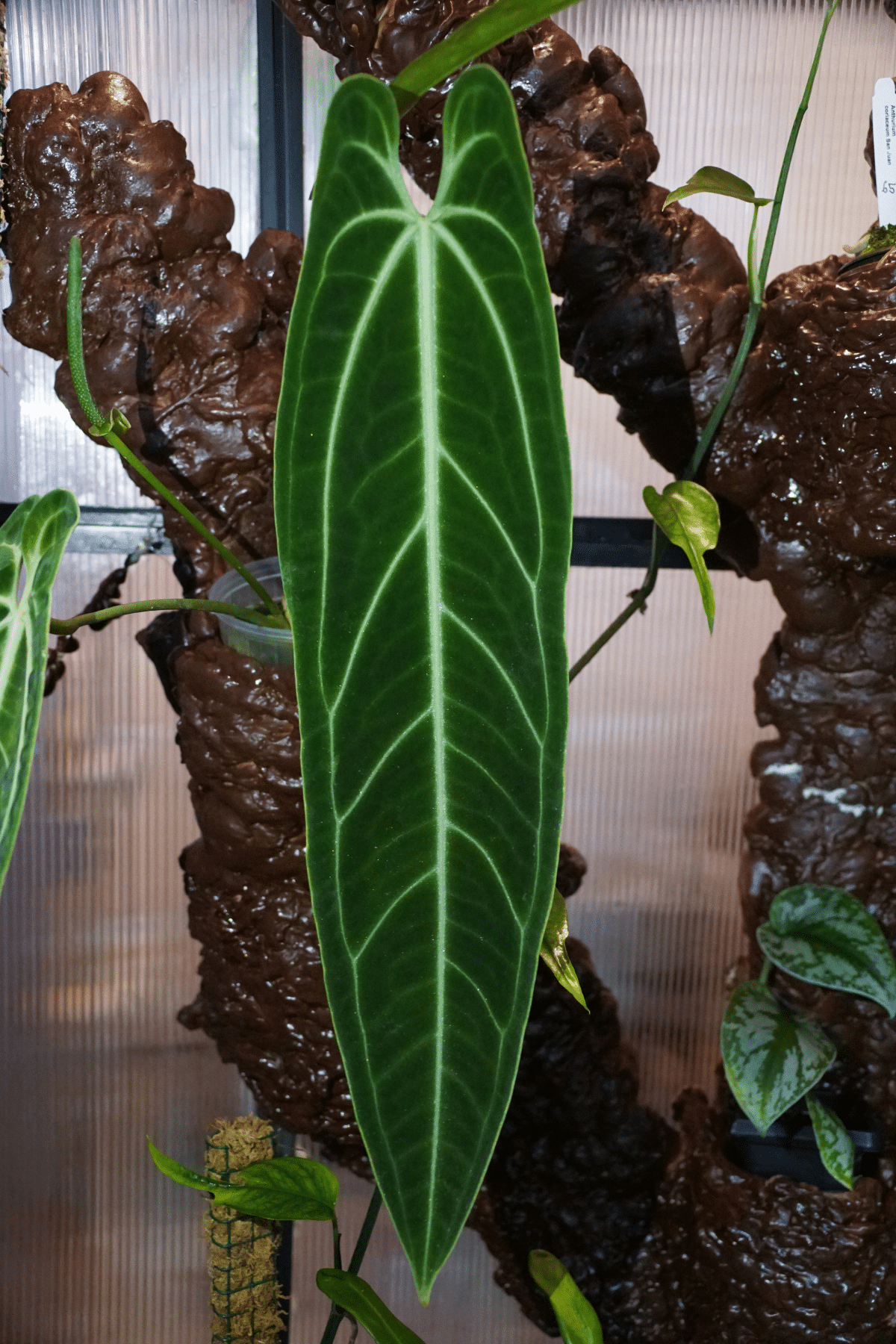
Aside from its unique beauty, the Anthurium Warocqueanum is well-known for its pricey nature. Considering the investment, you undoubtedly would want this tropical plant to thrive immediately.
So, here’s an ultimate guide to help you learn all about Queen Anthurium care.
Jump to:
Characteristics And Features Of The Queen Anthurium
Growth Habit And Size
Unlike most Anthurium plants that typically grow to a height of 2 to 3 feet, Queen Anthuriums can reach up to 6 feet in their natural habitat. Within just 2 to 3 years, they can transform from an offshoot to a tree-like plant. However, when planted outside their natural ecotype, they usually only grow less than 4 feet long.
As long as you provide the Queen Anthurium Warocqueanum with the optimal conditions for growth, these plants can thrive with their wide, dark green leaves that create a lush and captivating appearance.
Lifespan
The Queen Anthurium’s beauty can last for up to 3 to 5 years with proper care. That’s about the average lifespan you can expect from most indoor plants.
Leaf Structure And Size
Of course, the characteristic that makes anyone notice an Anthurium Warocqueanum in seconds is non-other than the thick cardboard and velvety leaf blades. These plants’ narrow leaves can grow up to 4 feet long indoors, and in the wild, they can even reach up to 8 feet.
A healthy Anthurium Warocqueanum will only have dark green leaves. Therefore, if you notice any discoloration, that’s a telling sign that your plant requires additional care.
Anthurium Warocqueanum Care Tips
I’m a huge fan of collecting low-maintenance indoor plants, but honestly, Queen Anthuriums aren’t really part of that group. This perennial is part of my “check-more-often” planting corner as it’s known to be sensitive to its environment.
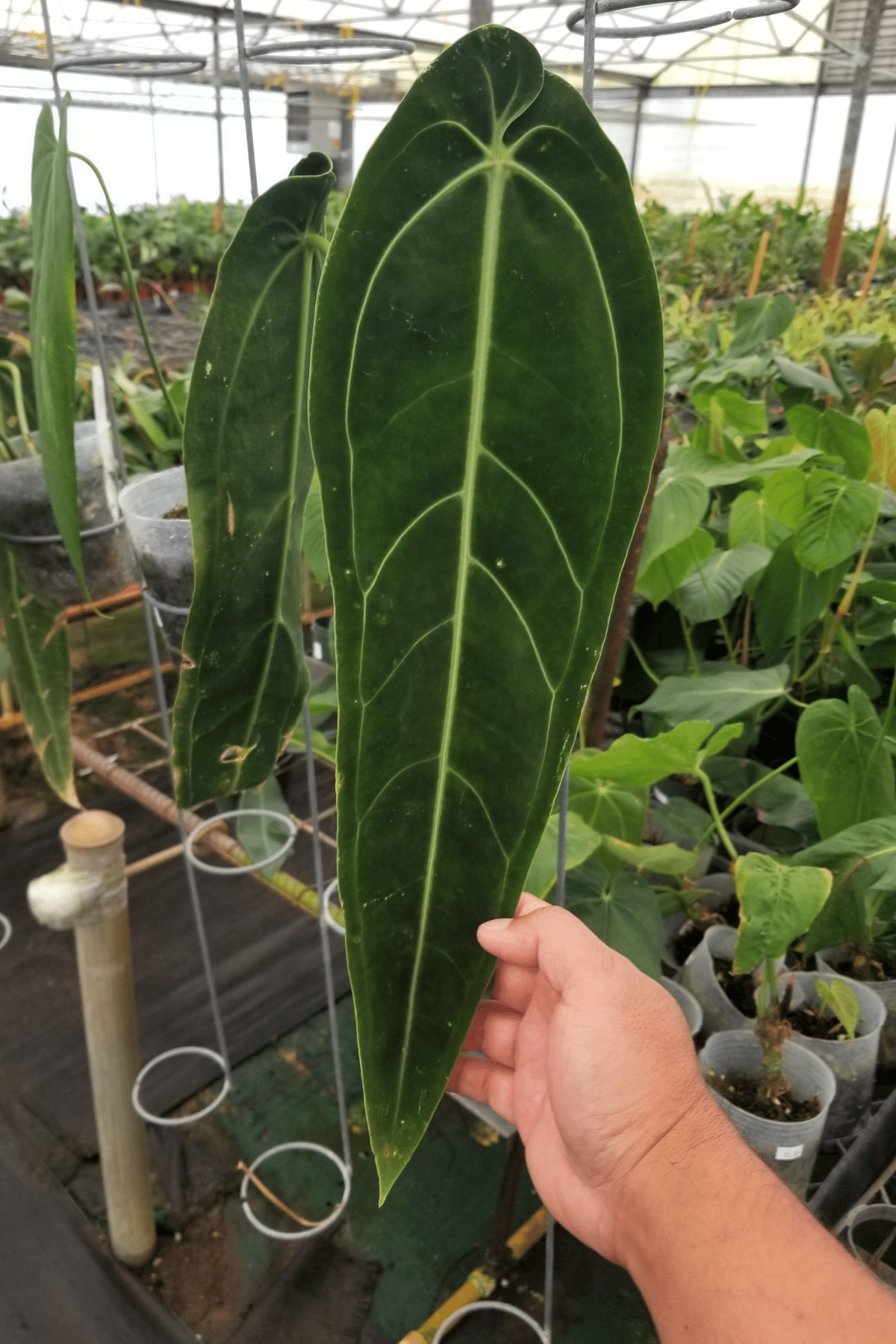
On that note, if you’re looking for a beginner plant and are not prepared to put much effort into raising your foliage yet, I recommend getting a different plant first.
Then, you can come back to this queen when you have some know-how about planting.
If you’re ready to tackle Anthurium Warocqueanums, this care guide will help.
Soil
Most Anthuriums, including the Queen Anthurium, are epiphytic plant species that typically grow on moss, other plants, or trees rather than in soil. Therefore, when keeping this plant indoors, you must give your Queen Anthurium a very breathable potting mix to provide it with excellent airflow and drainage.
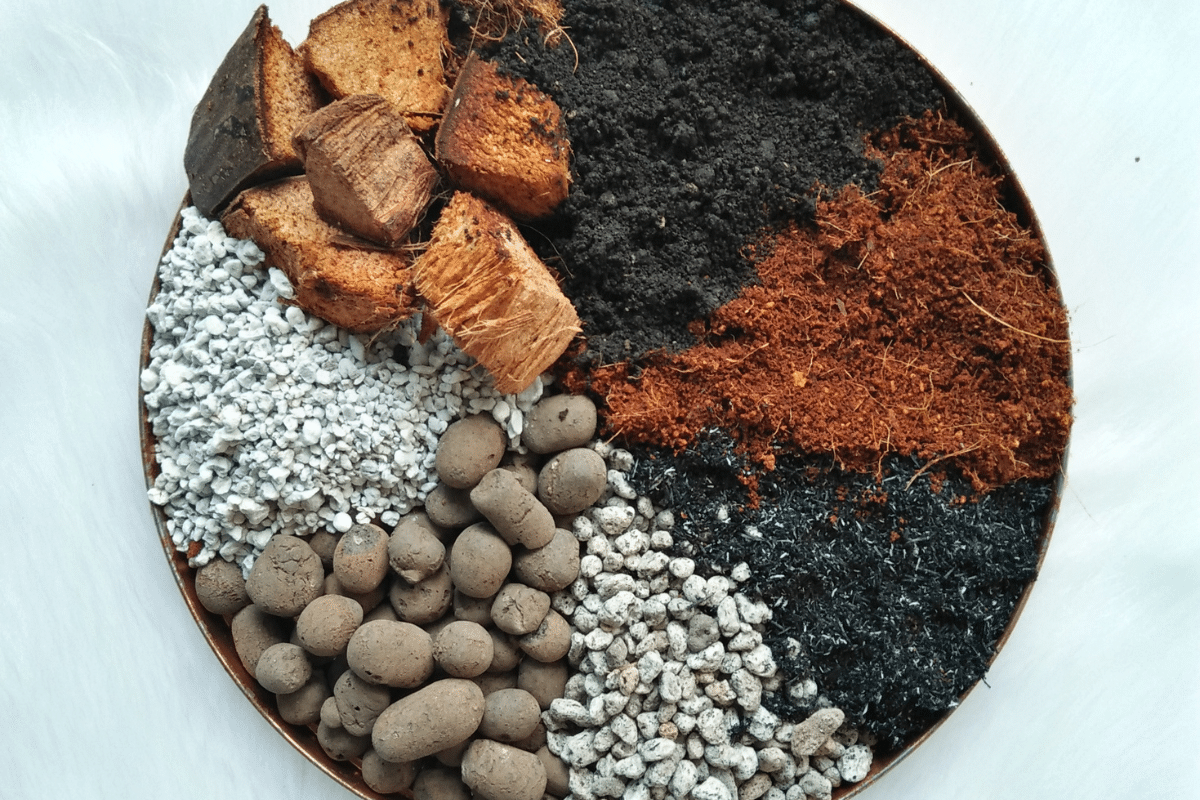
The soil mix should be even looser and coarser than the common well-draining soil, but still retain water well. To achieve this optimal potting mix, you may combine orchids bark, peat moss, charcoal, and perlite, then sprinkle the mixture with soil.
If you want a shortcut, you can keep this plant thriving by planting it on sphagnum moss alone.
Keep the soil’s pH level between 6.6 to 7.5 for best growth results.
Light
The Anthurium Warocqueanum grows best when provided with bright but indirect light. If it’s difficult for you to find a location that provides these light conditions, consider using grow lights. Be sure to keep the plant away from direct sunlight to prevent leaf scorching.
Watering Needs
Since the Anthurium Warocqueanum is used to being an epiphyte in a rainforest, it requires regular weekly watering. Some plant enthusiasts advise watering these plants every two weeks, similar to how you would water a Monstera. But if you want your plant to thrive, you should never let its soil go completely dry. After all, its natural environment is always moist and humid.
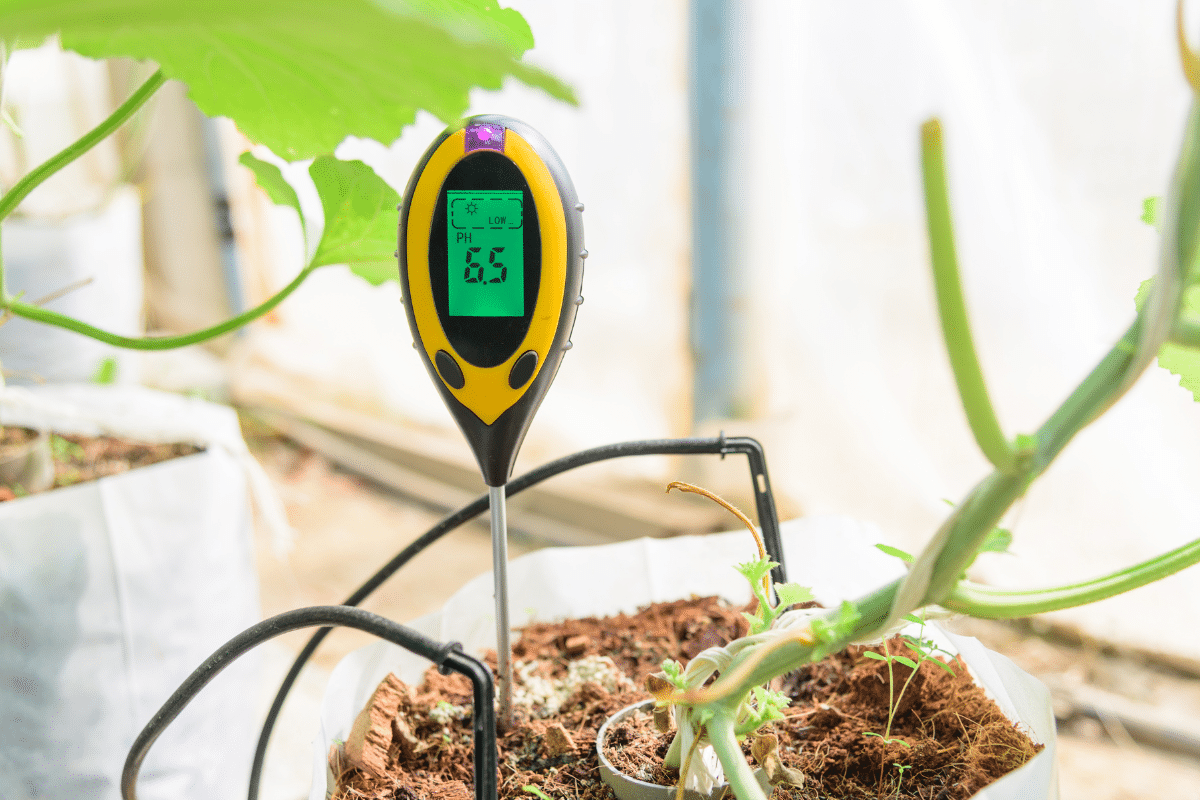
However, remember that, as with any other plant, you should never overwater your Queen Anthurium. When you’re unsure whether it’s time to water your plant, check your soil’s moisture by poking your finger into it or using a soil meter hygrometer.
Temperature
Anthurium Warocqueanum prefers warm environments with temperatures between 68-86°F (20-30°C). Ensure your plant is not frequently exposed to lower temperatures. So, pay closer attention to it, especially during the winter months.
Humidity Level
The Warocqueanum grows best in environments with humidity levels above 70%. This doesn’t mean that it cannot grow and survive in lower humidity conditions. However, higher humidity is always preferred for the leaves to maintain their color and health.
On top of keeping it in a humid room, you should also provide your plant with excellent air circulation. So, if you’re keeping it in a greenhouse, or other enclosed space, adding fans is ideal.
Fertilizer Needs
Since Anthurium Warocqueanum naturally grows in an environment surrounded by nutrients that it needs to thrive, regularly fertilizing it is necessary.
The key is to fertilize it weekly but with a weak solution. Use liquid fertilizer with nitrogen, phosphorus, and potassium, as these are often the nutrients commonly found in rainforests.
You may dilute your fertilizer to ¼ of its recommended strength to avoid overwhelming your Queen Anthurium.
Propagation Methods
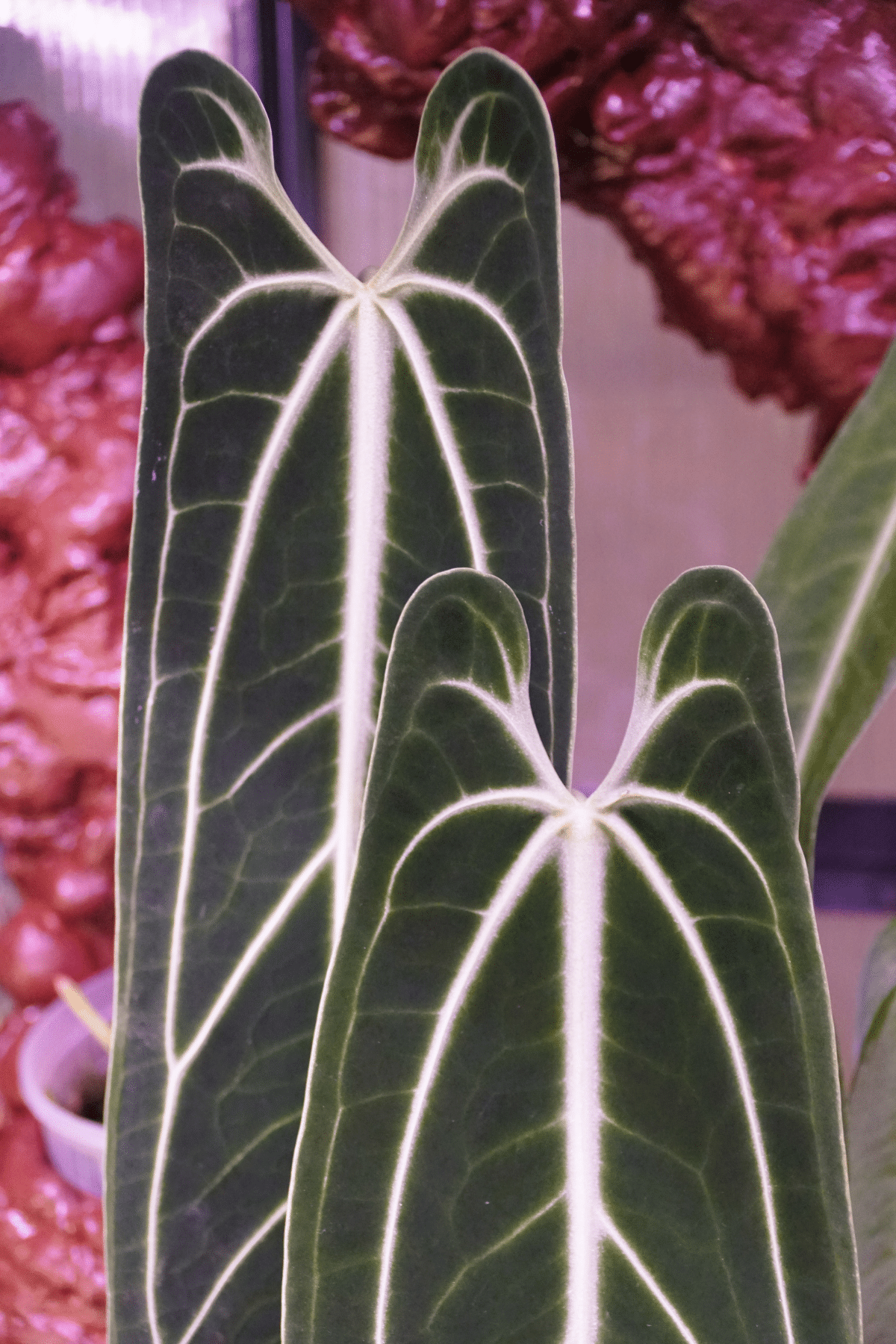
There are two popular ways to propagate your Anthurium Warocqueanum. The first one’s by division, which involves dividing your plant in half, including its roots. The second method is through stem cuttings, a process that requires you to cut a healthy stem from your plant and allow it to develop its own roots before replanting it into the soil.
When propagating your Anthurium, I highly recommend watching detailed videos that demonstrate the entire process. During my rookie years of planting, I was determined to learn the process on my own and avoided watching video tutorials.
Unfortunately, I had many mishaps during propagation, which often cost the life of my mother plant. So, be careful when propagating to be careful with the roots and stem cutting.
Common Problems And How To Treat Them
Even if you do your best to care for your Anthurium, diseases, and pests can still get in the way of your plant’s growth. Fortunately, fixing the problem is easier once you identify it. So, let’s go over the most common issues you should watch out for when caring for your Anthurium Warocqueanum.
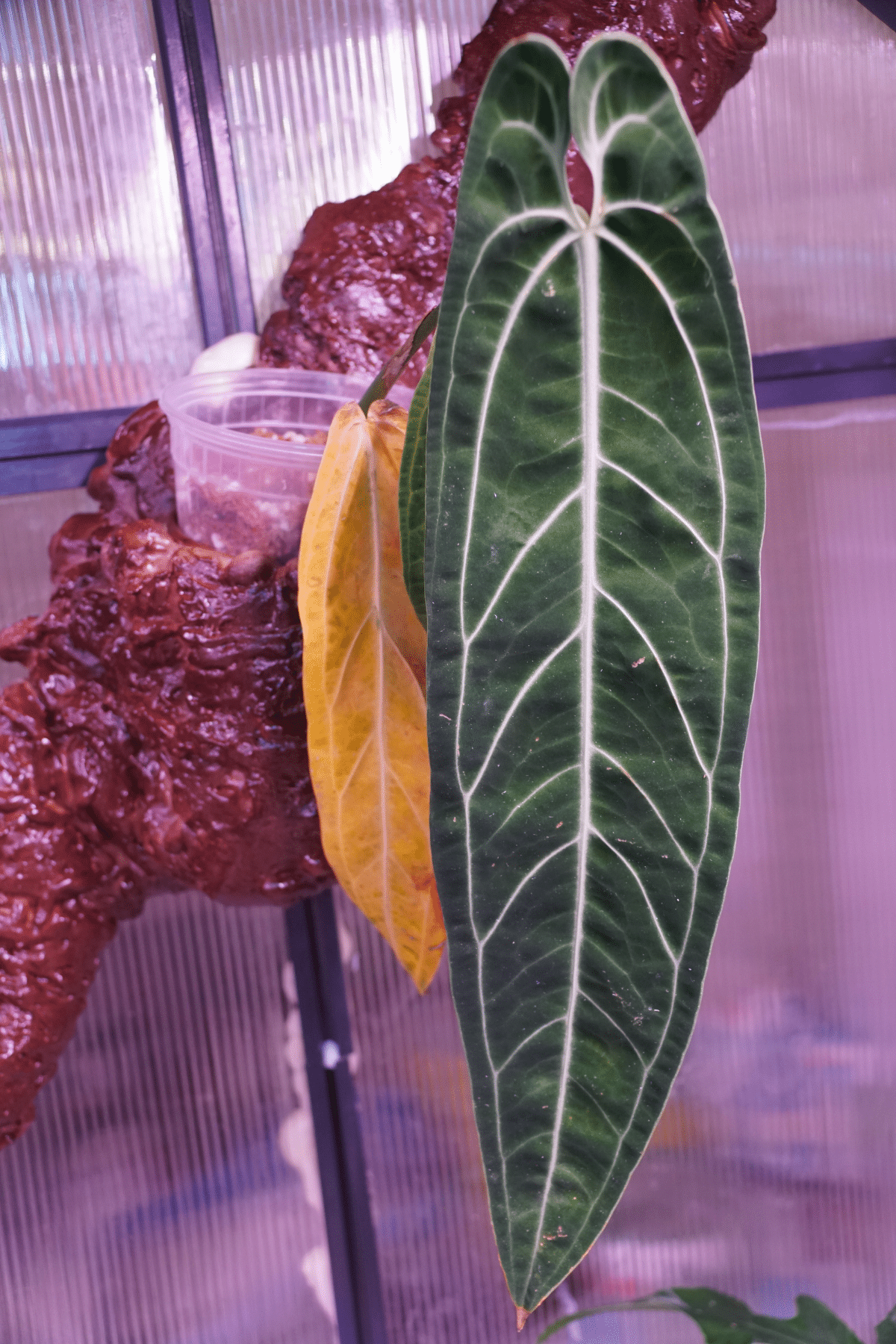
Diseases
Leaf Spots
If you see odd circular spots on your Queen Anthurium’s leaves, that’s most likely a sign of bacterial infection. This usually develops if water remains on your plant’s leaves for too long. Therefore, ensure you place your plant in a location where air circulates well to let it dry faster.
Brown leaves
This problem is often caused by exposure to too much direct sunlight. So, relocating your plant to an area with bright, but indirect light, may be enough to resolve the issue.
Note, though, that your Anthurium’s leaves can also turn brown if you’re not watering or fertilizing it enough. Ensure your plant is receiving enough water and nutrients by creating, and sticking to, an appropriate schedule for its watering and fertilization needs.
Yellow Leaves
Overwatering is usually the leading cause of yellow leaves. Double-check you’re using a potting mix that’s well-draining and isn’t dense. Additionally, avoid overwatering your plant by checking the soil’s moisture before you water it.
Pests
Mealybugs
Mealybugs are white pests that remind me of snow or cotton when they’re all bucked together. They love breeding on the Anthurium Warocqueanum plant, so if left unattended, they may suck off all the nutrients from your plant.
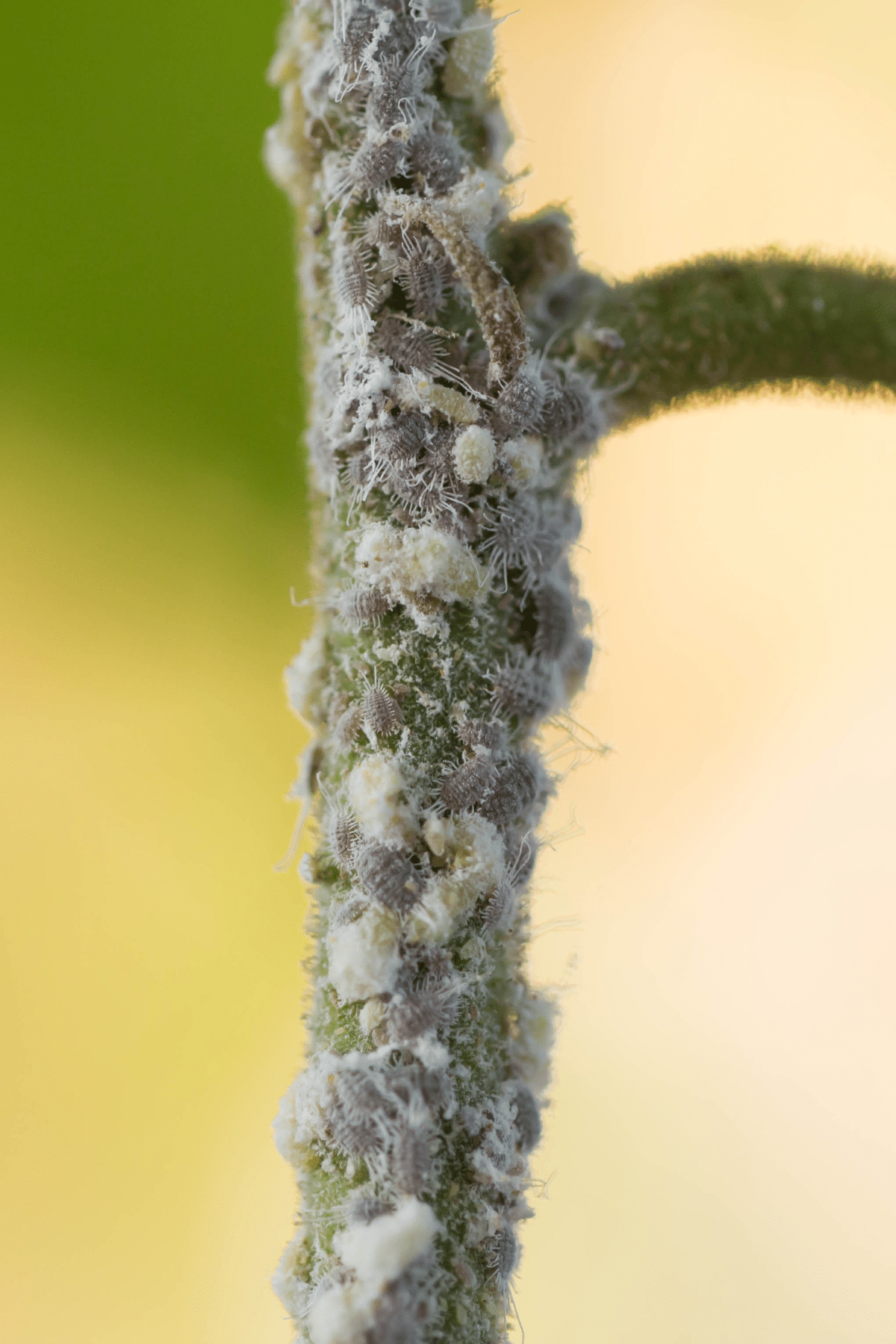
Worse yet, they have the potential to spread throughout your entire plant collection and wither all your plants away.
Eradicate mealybugs immediately after spotting them. You can dampen a cotton swab with 70% isopropyl alcohol and use it to remove the mealybugs from your plant’s leaves.
Aphids
Aphids are avid plant nutrient stealers that you definitely don’t want to flock around your Anthurium. These small, cricket-looking creatures reproduce fast. But luckily, getting rid of them is relatively easy.
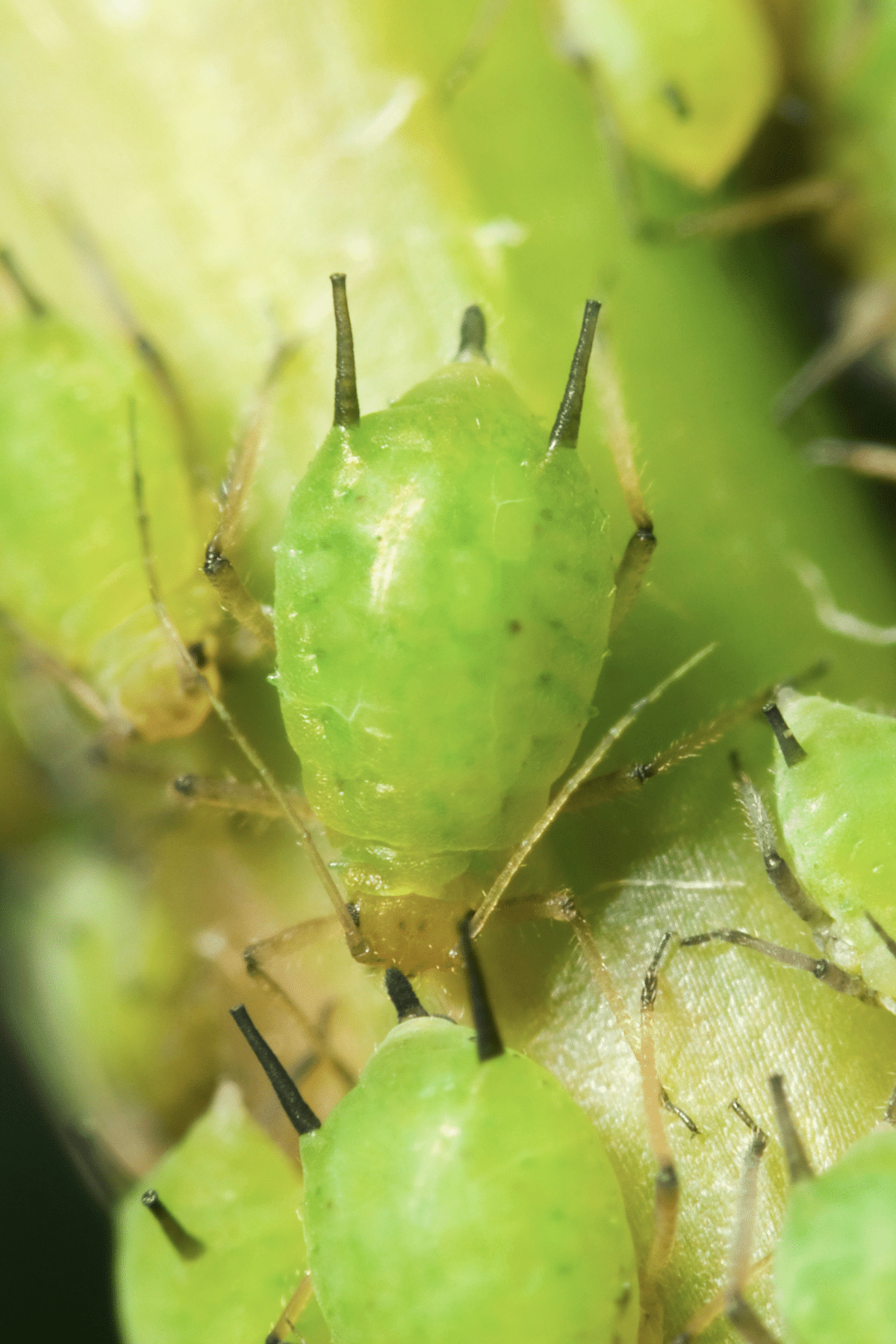
The easiest way to remove aphids from your plant is to manually pluck them off one by one while wearing gloves. However, if they gross you out, you may choose to call the best superheroes against aphids: ladybugs.
Aphids and ladybugs don’t really get along. So, just leave these good insects on your plant, and wait until the hero saves the day.
FAQs
Yes, they are renowned for producing flower-like spathes, typically in shades of red, yellow, and pink. With cultivation, it is also possible to achieve variations in colors such as white, lavender, and a deeper yellow shade.
Anthurium is not a fast-growing plant, as it’s considered to have a moderate growth rate. However, when well taken care of, your Queen Anthurium’s leaves can grow several feet in just 2 years or less.
Queen Anthurium can tolerate shade environments but prefers bright, indirect light. Note, though, that you should not place your plant in a location that receives direct sunlight to prevent scorching its leaves.
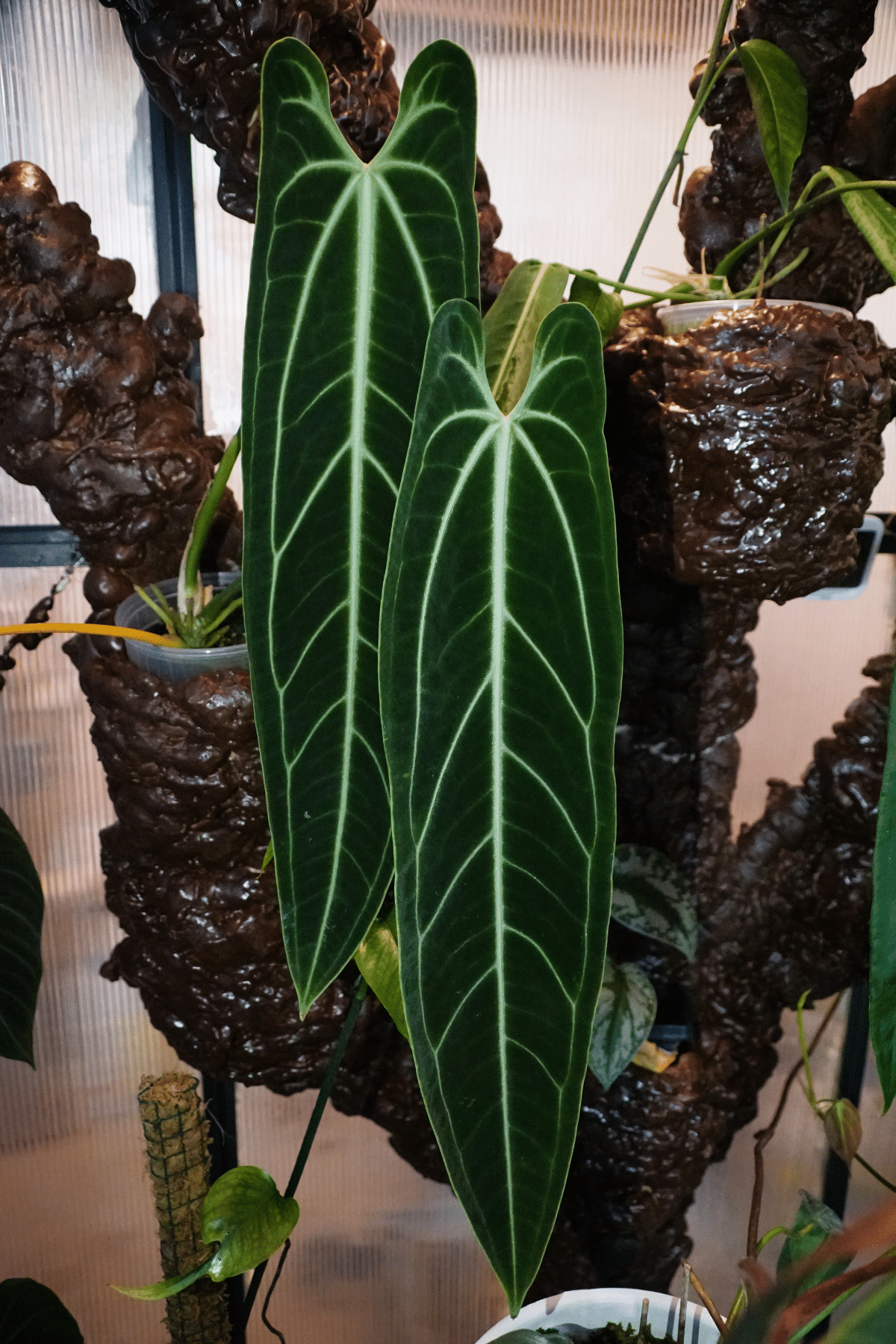
Anthurium Warocqueanum is not really a low-maintenance plant. However, with the captivating beauty it offers every day, I’d say keeping and caring for it is more than worth it. Queen Anthuriums can truly reign as the queens of your indoor plant collection, thanks to their gorgeous and gigantic leaves. So, I highly recommend it to plant parents willing to invest their time and energy in a striking addition to their plant family.
